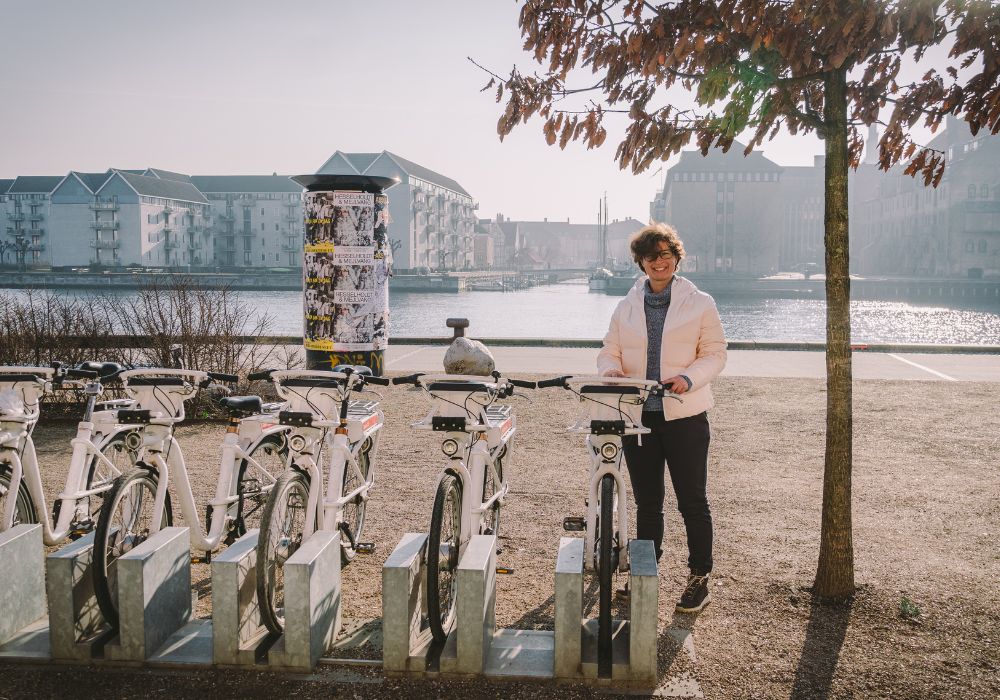Copenhagen recently announced it will start rewarding tourists for going green. Visitors to the city who participate in climate-friendly initiatives, like cycling, train travel and clean-up efforts, will get free museum tours, kayak rentals, meals and other benefits.
Elsewhere, local authorities are increasingly using disincentives or bans to protect local quality of life and prevent irresponsible behaviour. This includes Barcelona’s tax on cruise ship passengers and Mallorca’s sustainable tourism tax.
But which approach works better – Denmark’s carrots or Spain’s sticks? Research suggests carrots (or incentives) tend to be less effective than sticks (such as bans or penalties), even though people prefer carrots. This is partly because carrots, such as subsidised public transport, may not break car use habits, whereas sticks like congestion charges, are harder to ignore. A more effective and popular approach is to combine sticks with carrots – this helps break habits while reducing barriers to using alternatives.
At the UK Centre for Climate Change and Social Transformations, we know a lot about how to encourage more eco-friendly actions, but we also know that people are inconsistent. Measures that result in behaviour change at home may not work for the same people when they’re on holiday.
Studies show that people tend to be less green on holiday than at home. There are several reasons for this. First, we may consciously want to maximise enjoyment while on holiday. This “enjoyment-focused mindset” means consuming more, leading to more pollution. People also see holidays as a break from obligations – this can include environmental obligations.
In some cases, it may simply be more difficult to be green in other places where infrastructure doesn’t support green behaviour: for example, hotels may not have recycling facilities. Another reason is that our habits are context-dependent, so when we’re somewhere new we may act differently.
We found that recycling habits were much weaker in workplaces and on holiday, than at home. Interviews and a survey of UK laboratory workers showed different factors predicted recycling and waste reduction habits across these contexts – the proportion of waste recycled in the home was almost double (67%) that recycled in the workplace (39%) and on holiday (38%).
RELATED:
- Blistering heat is ravaging tourism hotspots. Can the industry reinvent itself?
- Can Mexico save its reefs from overtourism?
- North American cities take the lead on climate mitigation
So people often find it much harder to be sustainable on vacation where the environment is controlled by someone else, and where cost, convenience and time are often prioritised to ensure a good holiday. Green obligations or habits may not travel with us on holiday, so tourism providers should consider ways of greening behaviour relevant to their tourism context. Effective examples include reducing plate sizes at buffets or requiring guests to opt-in if they want daily hotel room cleaning.
But how long-lived are the effects of green behaviour changes adopted while on holiday? Do people who try cycling or litter-picking on holiday continue to do so once they’ve come home?
Context is important – we often revert to old habits when we get home. Green behaviour in nature reserves, for example, is unlikely to spillover to the home unless there is supporting infrastructure (such as cycle paths) in both places.
This spillover effect is more likely when someone undergoes a process of transformation on holiday. Research on transformative tourist experiences finds that immersive, joyful, and enriching experiences – enabling tourists to actively engage with local communities and foster new skills – can trigger permanent behaviour changes. For example, the Mālama Hawaiʻi Program (“mālama” means give back) encourages tourists to volunteer with local communities, creating profound, immersive and enriching experiences.
Home and away
You don’t need to go abroad to experience these transformational effects. In our study of food festivals, we found that visitors’ level of engagement in a food festival (that is, food and drink tasting, discussing food with local producers and learning more about local food products) not only increased festival enjoyment but also drove locally-produced food purchases six months later.
Similarly, we found visitors’ level of behavioural engagement during a national cultural festival influenced cultural post-festival legacies. We categorised festival-goers into four groups based on their participation levels in festival activities – disengaged, observers, learners and doers. Both learners and doers were more likely to get involved in cultural and community events afterwards, possibly because they were more directly invested in hands-on activities during the festival.
Taken together, this means breaking habits and enabling good behaviours are both important for change either on holiday or at home. But behaviour change that spans contexts requires transforming people’s sense of self, connection to others and skills. Critically, providing monetary rewards is not enough to trigger transformation. That comes from deeper cognitive, emotional and social engagement.
Ultimately, this may involve reconceptualising tourism from being another space for (excessive) consumption to an opportunity for personal growth and giving back – or more mālama.
professor of environmental psychology at the University of Bath, and rofessor of marketing at Cardiff University.
This article was first published by The Conversation. Read the original story here.







